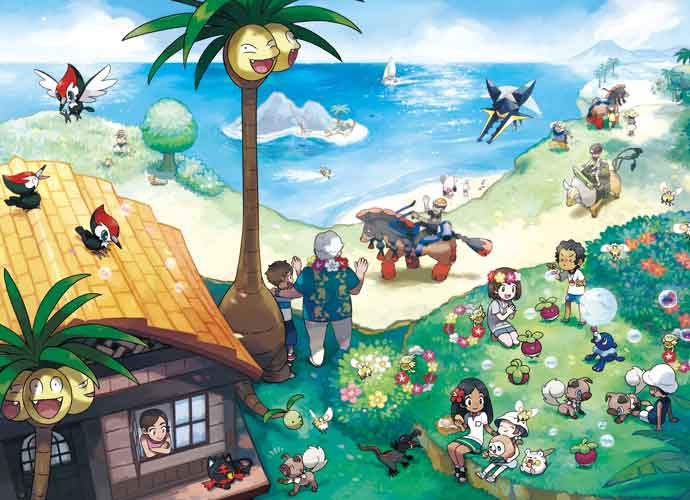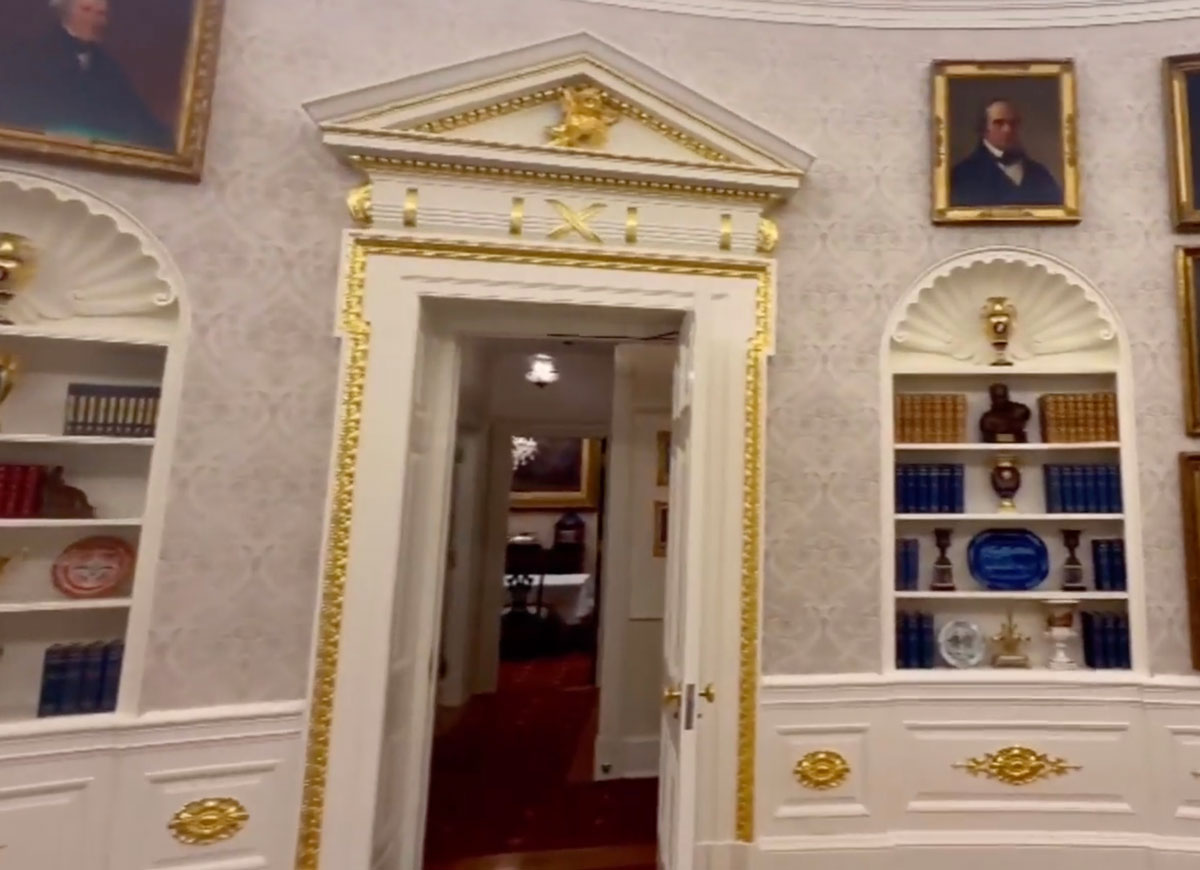‘Pokémon Sun’ And ‘Moon’ Game Review: Still The Very Best

4/5
Wild Pokémon first appeared 20 years ago, and the fantastical animals produced a multimedia franchise spanning video games, an ongoing anime, a trading card game, merchandise and much, much more.
Pokémon earned its place as one of Nintendo premier properties. Game Freak is the developer behind the core Pokémon titles, from Red and Green to the brand new Sun and Moon. The mainline series has an established procedure, and while the quality does vary from game to game, each installment is intended to entertain newcomers and veterans alike.
Pokémon Sun and Moon, as noted, are the latest games in the venerable JRPG series, and they mark the franchise’s seventh generation. The pair is likewise meant to celebrate two decades of Pokémon, which is a duty Game Freak and director Shigeru Ohmori took to heart.
So, 20 years later, do Sun and Moon prove that franchise fatigue has started to set in or is Pokémon as fighting fit as ever?
Two of the central components to the main Pokémon titles are catching Pokémon and battling with them. These elements have been polished over years of cultivating the series, and they’re as addictive as they’ve always been.
Catching Pokémon effectively works as it always has: weaken a Pokémon through battle, and toss a Poké Ball to (hopefully) add it to your collection. As you travel, you’ll encounter wild critters in tall grass, caves, across the sea, by fishing, and in scripted encounters. Some Pokémon can evolve upon meeting certain conditions, usually by gaining enough combat experience.

Decidueye in Pokémon Sun and Moon (Image: Nintendo/The Pokémon Company)
Alola is the natural habitat of 81 heretofore unseen Pokémon. However, while that is a sparse assortment, Alola is also home to several species from the previous generations, so you’ll have plenty of options as you gather your party. The new Pokémon are, as usual, nicely designed, with Mimikyu and Decidueye’s evolutionary line resonating the strongest with me. Some of the older Pokémon are different than you may recall, but we’ll discuss that a little later.
Pokémon battles likewise maintain the same fundamentals: both Trainers command their Pokémon to attack the opposing Pokémon in turn-based combat. Knocking out your opponent’s Pokémon team will render you the winner. Trainers can compete against each other in Single and Double Battles.
Every Pokémon can remember up to four moves, and each move has different attributes. Some moves directly damage the foe, some moves can alter either Pokémon’s stats, others plague a Pokémon with a status aliment, and some can affect the terrain the battle is transpiring on. Additionally, a Pokémon utilizing an attack of its type will increase the damage output of said attack.
Certain moves are more practical than others, but it’s up to the Trainer to create a six-man team with a diverse set of skills. Pokémon’s innate abilities add to the strategy, as do items they can hold during battle, both of which trigger additional benefits.
In battle, all wild Pokémon may call in a backup Pokémon to aid them, meaning a battle can instantly shift from a one-on-one to a one-on-two. Battle Royals, a new format, are a four-player free-for-all. Unfortunately, these encounters bring about a weakness in the game’s engine, as battles with more than two active Pokémon tend to drop in framerate. (It’s easy to guess why Triple Battles and Rotation Battles have been abandoned.)
Pokémon X and Y introduced Mega Evolution – a special form change that only occurs during battle – as a new mechanic. Mega Evolutions bestowed hand-picked Pokémon with an improvement in their fighting aptitude, regularly granting them enhanced stats and a more worthwhile ability. While Mega Evolutions are available in Sun and Moon, they’re unavailable during the main campaign.

Pikachu using Gigavolt Havoc in Pokémon Sun and Moon (Image: Nintendo/The Pokémon Company)
Instead, Pokémon Sun and Moon offer their own contribution to the formula: Z-Moves. Each Z-Move requires its linked Pokémon to hold a certain item during battle – just as Mega Evolutions do – but instead of a battle-long power-up, a Z-Move is a single-use attack with nuclear consequences. As you progress, you’ll obtain Z-Crystals corresponding to all 18 Pokémon types. Additionally, select Pokémon bear a species-exclusive Z-Crystal, granting them a distinct Z-Move.
Another aspect of Mega Evolution is how it reinvigorated older Pokémon. Sun and Moon achieve this as well, albeit via the new regional variants. These are Pokémon that have adapted to Alola’s climate and, consequently, diverged from their traditional designs. These alterations not only tweak a species’ appearance, however; their types and stat distributions are new, too. Dejectedly, while Mega Evolutions primarily spanned the first four generations, regional variants are limited to the Kanto Pokédex. Regardless, it’s still nice to see old, disregarded favorites attain relevancy again.
Pokémon is also largely defined by the sense of adventure. Alola, a tropical island chain based on Hawaii, is our new playground, and it’s one of the stronger regions in the series, if not the strongest. Despite the tropical backdrop, Alola hosts a wide variety of environments, and shifting from island to island is a noteworthy divergence from walking across one large landmass.
More so than previous regions, Alola presents the aura of being an organic, occupied place, and it’s overflowing with details, some of which enhance Alola’s lore and culture. Plus, Sun and Moon, unlike X and Y, share the benefit of a relatively elaborate post-game, giving you reason to sightsee after you’re the Champion.
Shortly after starting, you’ll be gifted your first Pokémon. As per tradition, your choices are a Grass-type, a Fire-type and a Water-type. You’ll also become acquainted with several of the key players in the story.
You, the hero or heroine, regularly travel with your best friends, Hau and Lillie. The former is one of your two rivals, and you’ll engage in friendly competitions at predetermined spots in Alola. Hau is personable and giving, serving as a contrast to your other rival: Gladion. Unlike most of his cohorts, Gladion is solely focused on becoming stronger, making him more in line with Blue and Silver.
Naturally, it isn’t a Pokémon game without an unpleasant group of rogues to antagonize, and Sun and Moon’s requisite clique is Team Skull. The benign Aether Foundation operates under the radar to create a haven for all Pokémon, and the two groups are prominently involved with the story. The Ultra Beasts – enigmatic creatures from another dimension – are major players in Alola’s tale, too.
Pokémon Sun and Moon, following a natural progression of the series, have an emphasis on their narrative. The cast is generally likable, although cutscenes and dialog occur frequently and often overstay their welcome. Moreover, regardless of what’s presently happening, the protagonist nearly always has a jarring smile plastered on his or her face. It’s comical at first, but as the crisis escalates, the disconnect your avatar has with the world gradually becomes more distracting.
Pokémon doesn’t exactly have a high bar in terms of its storytelling, but for what it’s worth, this is Game Freak’s most effective attempt yet. Several familiar beats to prior generations’ stories are made, occasionally playing with our expectations.
Sun and Moon’s big departure from Pokémon’s standard formula is Alola’s Island Challenge. Rather than collect eight Gym Badges, you’ll partake in various quests. Alola’s four main islands have at least one Trial Captain who issues your assignment, which can be a series of battles, a quiz or a scavenger hunt. These trials are generally simplistic, but I appreciate the deviation from the norm. The climatic conclusion to a trial is a battle with a fortified Totem Pokémon.
Upon defeating the enlarged specimen, you’ll be rewarded with a Z-Crystal as proof of your victory. Upon satisfying an island’s Trial Captains, you’ll challenge the island’s Kahuna, who is essentially an island’s Gym Leader. You’ll, as implied, close with another Pokémon tradition following your victory over the Kahunas: the Pokémon League, and it’s (arguably) the best one yet.
The Nintendo 3DS’s bottom screen houses your Rotom Pokédex, which functions as your touch-screen controlled menu. During the adventure, your travelling companion will remind you of your current objective, both through text and its map. Your next destination is always marked for you, meaning you’ll always know where you’re expected to be. Pokémon has progressively gotten more linear over the generations, and whilst I’m unsure if Sun and Moon are the most linear installments, they definitely feel like they are.
Each new Pokémon generation brings with it a smorgasbord of quality of life improvements, with Sun and Moon’s biggest amelioration being the removal of the archaic HMs. In previous games, Trainers would often be required to waste a spot in their party on a utility knife Pokémon to surmount conveniently placed obstacles in their path. Now, the Ride Pager allows you to instantly summon a Pokémon to Surf, Fly or Strength. Other Pokémon are assigned to the Page Rider, too, which replace the Bike and item finders from prior games.
Pokémon Refresh, an evolution of X and Y’s Pokémon Amie, is another valued upgrade. Here, you can play with your Pokémon and intuitively cure them of any status illnesses. Customization from X and Y returns, too, which again gives you numerous methods to dress up your avatar, further establishing Sun and Moon as your journey.
As Pokémon fans know, Game Freak often regresses in certain facets as they build upon others. The biggest devolution this time is the internet connection. The PSS (Player Search System) from X, Y, Omega Ruby and Alpha Sapphire seamlessly allowed you to enjoy all aspects of the game while interacting with bystanders across the internet. You could finish a battle with a stranger, proceed to trade with a friend, and then walk into a Pokémon Center to inspect your new pet.
Sun and Moon replaced the PSS with the Festival Plaza, which is significantly more insular in its execution. In Alola, the Festival Plaza is the only means to connect online. It’s meant to facilitate cooperative play between Trainers, but it comes at the expense of convenience; if you want to battle or trade, you must log on here, and you’re stuck with disinteresting material if you’re not partaking in either of those activities.
Going off precedent, Sun and Moon won’t be the only mainline seventh generation Pokémon games, so the Festival Plaza is the area I hope Game Freak improves upon the most for next time, as it’s a clear downgrade.
One positive advancement, however, is the ability to scan a QR code to register a pre-made team for use online. And if you want to develop your own home-grown team, the barrier of entry to the competitive side of Pokémon has never been more welcoming. It’d behoove you to invest some time in the Poké Pelago, too.
https://www.youtube.com/watch?v=qa_VBWFH_QQ
In terms of sound, Pokémon Sun and Moon are archetypal of the series. The standard battle track‘s melodies are reminiscent of their predecessors, and several new themes have a flair befitting of Pokémon’s Hawaii. Returning characters bring their signature leitmotifs with them, and the new cast’s themes sound consistent with the established tone. The Champion’s theme is probably my favorite track, partially for reasons that cannot be discussed without spoiling the encounter. (The track’s title is even a spoiler.) Sun and Moon’s sound effects are what you’d expect, too.
Graphically, Sun and Moon abandon the chibi presentation that characterized Pokémon’s overworlds until now. Instead, high-quality models X and Y limited to battles are used to represent the realm. This helps construct a more convincing local, partially because the realistically proportioned models loan themselves more to the sensation of a grand adventure than the sixth generation’s comparatively cheap looking presentation. Alola’s landmarks benefit from the change, as well, since their layouts are more elaborate and dynamic.
Finally, it’s worth discussing Sun and Moon’s stature as the anniversary’s celebratory game. Several fun callbacks are made to prior generations in the form of Easter eggs and recurring faces (a few of whom were a treat to see again, and one of whom was a surprise considering the obscurity of her game of origin). While the nostalgia was lopsided in favor of the initial era of Pokémon and other generations could’ve used more attention, you’ll find a reference or two that brings you back.
Pokémon Sun and Moon don’t mess too much with the series’ recipe, but it’s shaken up enough to provide a refreshing journey. Alola is a treat to explore, from its multicultural aesthetics to its unique structure. Your charming social circle will keep you entertained across the Island Challenge, too, even if it’d be appreciated if they’d tone down their commentary.
In closing, Pokémon Sun and Moon are a well-made introduction to a new generation. You’ll recall fond memories from your youth, and children who’re first discovering the world of Pokémon will undoubtedly forge many of their own. 20 years later, and we still gotta catch ‘em all!
RELATED ARTICLES
Get the most-revealing celebrity conversations with the uInterview podcast!






Leave a comment